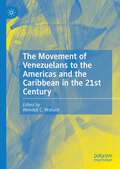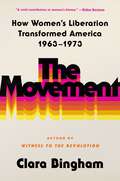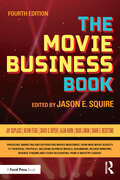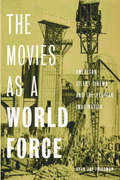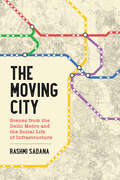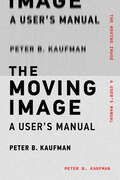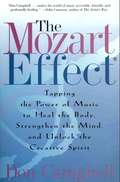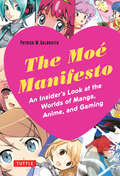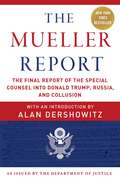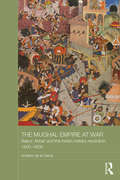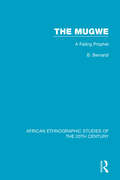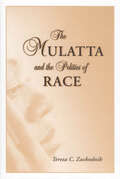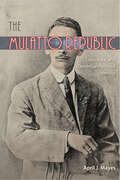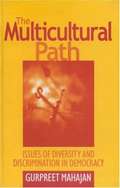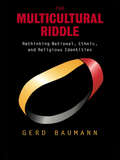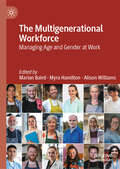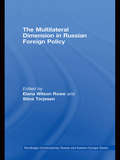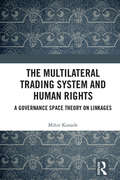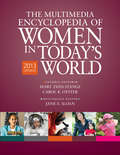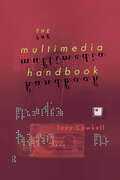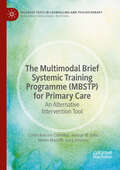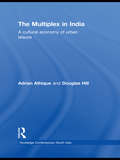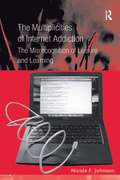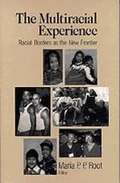- Table View
- List View
The Movement of Venezuelans to the Americas and the Caribbean in the 21st Century
by Wendell C. WallaceCitizens in the contemporary era are increasingly residing in an age of constant migration, however, not all migratory movements are fully understood as migrants are often excoriated on entry to host countries. It is therefore important to enhance our understanding of migration, especially from nations that were once touted as being all-conquering, powerful, and mighty, as is the case of Venezuela. The Movement of Venezuelans to the Americas and the Caribbean in the 21st Century places singular focus on the migration of Venezuelans into the Americas and smaller nation states of the Caribbean and offers a plethora of ontologies and insights into the phenomenon. This riveting and captivating book is written by experts in a range of disciplines, including, but not limited to, criminology and criminal justice, sociology, policing, national security studies, migration studies, and social work. Instructively, it is the transdisciplinary nature of the work that makes the book limitless in nature and scope. The book makes a valuable contribution to academe as it plugs a lacuna in the literature on Venezuelan migration in the early 21st Century and enhances our understanding of the phenomenon. Edited by eminent Caribbean scholar, Dr. Wendell C. Wallace, The Movement of Venezuelans to the Americas and the Caribbean in the 21st Century is a must read for anthropologists, criminal justice practitioners, psychologists, political scientists, social workers, migration specialists as well as individuals who are interested in understanding the migration of Venezuelans in the first two decades of the 21st Century.
The Movement: How Women's Liberation Transformed America 1963-1973
by Clara BinghamA comprehensive and engaging oral history of the decade that defined the feminist movement, including interviews with living icons and unsung heroes—from former Newsweek reporter and author of the &“powerful and moving&” (The New York Times) Witness to the Revolution.For lovers of both Barbie and Gloria Steinem, The Movement is the first oral history of the decade that built the modern feminist movement. Through the captivating individual voices of the people who lived it, The Movement tells the intimate inside story of what it felt like to be at the forefront of the modern feminist crusade, when women rejected thousands of years of custom and demanded the freedom to be who they wanted and needed to be. This engaging history traces women&’s awakening, organizing, and agitating between the years of 1963 and 1973, when a decentralized collection of people and events coalesced to create a spontaneous combustion. From Betty Friedan&’s The Feminine Mystique, to the underground abortion network the Janes, to Shirley Chisholm&’s presidential campaign and Billie Jean King&’s 1973 battle of the sexes, Bingham artfully weaves together the fragments of that explosion person by person, bringing to life the emotions of this personal, cultural, and political revolution. Artists and politicians, athletes and lawyers, Black and white, The Movement brings readers into the rooms where these women insisted on being treated as first class citizens, and in the process, changed the fabric of American life.
The Movie Business Book
by Jason E. SquireTapping experts in an industry experiencing major disruptions, The Movie Business Book is the authoritative, comprehensive sourcebook, covering online micro-budget movies to theatrical tentpoles. This book pulls back the veil of secrecy on producing, marketing, and distributing films, including business models, dealmaking, release windows, revenue streams, studio accounting, DIY online self-distribution and more. First-hand insider accounts serve as primary references involving negotiations, management decisions, workflow, intuition and instinct. The Movie Business Book is an essential guide for those launching or advancing careers in the global media marketplace.
The Movies as a World Force: American Silent Cinema and the Utopian Imagination
by Ryan Jay FriedmanThroughout the silent-feature era, American artists and intellectuals routinely described cinema as a force of global communion, a universal language promoting mutual understanding and harmonious coexistence amongst disparate groups of people. In the early 1920s, film-industry leaders began to espouse this utopian view, in order to claim for motion pictures an essentially uplifting social function. The Movies as a World Force examines the body of writing in which this understanding of cinema emerged and explores how it shaped particular silent films and their marketing campaigns. The utopian and universalist view of cinema, the book shows, represents a synthesis of New Age spirituality and the new liberalism. It provided a framework for the first official, written histories of American cinema and persisted as an advertising trope, even after the transition to sound made movies reliant on specific national languages.
The Moving City: Scenes from the Delhi Metro and the Social Life of Infrastructure
by Rashmi SadanaThe Moving City is a rich and intimate account of urban transformation told through the story of Delhi's Metro, a massive infrastructure project that is reshaping the city's social and urban landscapes. Ethnographic vignettes introduce the feel and form of the Metro and let readers experience the city, scene by scene, stop by stop, as if they, too, have come along for the ride. Laying bare the radical possibilities and concretized inequalities of the Metro, and how people live with and through its built environment, this is a story of women and men on the move, the nature of Indian aspiration, and what it takes morally and materially to sustain urban life. Through exquisite prose, Rashmi Sadana transports the reader to a city shaped by both its Metro and those who depend on it, revealing a perspective on Delhi unlike any other.
The Moving Image: A User's Manual
by Peter B. KaufmanThe definitive guidebook for using video in modern communication.Video (television, film, the moving image generally) is today&’s most popular information medium. Two-thirds of the world&’s internet traffic is video. Americans get their news and information more often from screens and speakers than through any other means. The Moving Image is the first authoritative account of how we have arrived here, together with the first definitive manual to help writers, educators, and publishers use video more effectively. Drawing on decades as an educator, publisher, and producer, MIT&’s Peter Kaufman presents new tools, best practices, and community resources for integrating film and sound into media that matters.Kaufman describes video&’s vital role in politics, law, education, and entertainment today, only 130 years since the birth of film. He explains how best to produce video, distribute it, clear rights to it, cite it, and, ultimately, archive and preserve it. With detailed guidance on producing and deploying video and sound for publication, finding and using archival video and sound, securing rights and permissions, developing distribution strategies, and addressing questions about citation, preservation, and storage—across the broadest spectrum of platforms, publications, disciplines, and formats—The Moving Image equips readers for the medium&’s continued ascendance in education, publishing, and knowledge dissemination in the decades to come. And, modeled in part on Strunk and White&’s classic, The Elements of Style, it&’s also a highly enjoyable read.
The Mozart Effect: Tapping the Power of Music to Heal the Body, Strengthen the Mind, and Unlock the Creative Spirit
by Don CampbellAnyone who has ever seen a two-year-old start bouncing to a beat knows that music speaks to us on a very deep level. But it took celebrated teacher and music visionary Don Campbell to show us just how deep, with his landmark book The Mozart Effect.Stimulating, authoritative, and often lyrical, The Mozart Effect has a simple but life-changing message: music is medicine for the body, the mind, and the soul. Campbell shows how modern science has begun to confirm this ancient wisdom, finding evidence that listening to certain types of music can improve the quality of life in almost every respect. Here are dramatic accounts of how music is used to deal with everything from anxiety to cancer, high blood pressure, chronic pain, dyslexia, and even mental illness.Always clear and compelling, Campbell recommends more than two dozen specific, easy-to-follow exercises to raise your spatial IQ, "sound away" pain, boost creativity, and make the spirit sing!
The Moé Manifesto: An Insider's Look at the Worlds of Manga, Anime, and Gaming
by Patrick W. GalbraithMOE is a huge cultural phenomenon and one of the driving forces behind the enormous success of Japanese anime and manga-not just in Japan now, but throughout the world.<P><P>In Japan, avid fans of manga comics, anime films and videogames use the term MOE to refer to the strong sense of emotional attachment they feel for their favorite characters. These fans have a powerful desire to protect and nurture the young, beautiful and innocent characters they adore-like Sagisawa Moe in Dinosaur Planet and Tomoe Hotaru in Sailor Moon. They create their own websites, characters, stories, discussion groups, toys and games based around the original manga and anime roles.Author Patrick Galbraith is the world's acknowledged expert on MOE and a journalist based in Tokyo. For this book, he interviewed twenty important figures in the world of Japanese manga and anime to gain their insights on the MOE phenomenon. These interviews provide us with the first in-depth survey of this subject. Galbraith uncovers how MOE is influencing an entire generation of manga artists and readers. For those new to anime, manga, and youth culture in Japan, he discusses what constitutes the ideal MOE relationship and why some fans are even determined to marry their fictional sweethearts. He reveals key moments in the development of MOE, and current and future trends in the spread of MOE works and characters from Japan to other parts of the world.The Moe Manifesto provides an insider's look at the earliest MOE characters such as Ayame by Tezuka Osamu. The book has over 100 illustrations of the most famous MOE characters, many in color, and it is sure to delight manga and anime fans of every age.
The Mueller Report: The Final Report of the Special Counsel into Donald Trump, Russia, and Collusion
by Robert S. Mueller III Special Counsel's U.S. Department of JusticeThere has never been a more important political investigation than Robert S. Mueller III's into President Donald Trump's possible collusion with Russia. His momentous findings can be found here, complete with: <br>The 300+ pages of the historic report, as released by the Justice Department <br>An introduction by constitutional scholar, eminent civil libertarian, and New York Times bestselling author Alan Dershowitz. <P><P>The relevant portions of Title 28 of the Code of Federal Regulations, the 1999 provisions written by former acting Solicitor General Neal Katyal, which establish and regulate the powers of the special counsel. <P><P>Rod Rosenstein’s 2016 order appointing Robert Mueller III as special counsel and outlining the scope of his investigation. <P><P>Attorney General William Barr’s four-page summary of the report, as sent to Congress. <P><P>Barr's explanation of the four reasons for redacting the report, and a key for identifying them in the color-coded report <P><P>The wait is over. Robert Mueller, a lifelong Republican, has concluded his investigation and submitted its findings to Attorney General William Barr. Barr has told Congress that Mueller found no proof of collusion between the Trump campaign and Russia, and did not come to a conclusion on obstruction of justice—neither concluding the president committed a crime nor exonerating him. But Mueller’s report was over 300 pages and Barr’s summary was only four pages, raising questions about the conclusions of a historic investigation. <P><P>Special Counsel Robert Mueller III’s probe into Russian influence on the 2016 election of Donald Trump—including links between the campaign and Russian interests, obstruction of justice by President Trump, and any other matters that may have arisen in the course of the investigation—has been the focal point of American politics since its inception in May 2017. Democrats in the US House of Representatives hoped to use the report to begin impeachment proceedings, with the support of those critical of the president. Media tracked Mueller’s every move, and the investigation was subject to constant speculation by political pundits everywhere. It resulted in the indictments of Michael Flynn, Paul Manafort, Roger Stone, and many others. President Trump and his supporters affirmed that the investigation was a “witch hunt” and the product of a plot by the political establishment—the “deep state”—to delegitimize his presidency. <P><P> Mueller’s findings—at least according to Barr—allowed the latter to claim victory. But now, thanks to a subpoena from House Judiciary Committee chairman Jerry Nadler for the full report, a resolution from the House of Representatives to release the full report to the public (though blocked in the Senate by Mitch McConnell), and popular demand, it’s time for public to judge if that is true. The Mueller investigation will join Watergate, and the Mueller Report will join the 9/11 Commission Report, the Warren Report, and the Starr Report, as one of the most important in history. The Mueller Report is required reading for everyone with interest in American politics, for every 2016 and 2020 voter, and every American. It’s now available here as an affordable paperback, featuring an introduction from eminent civil libertarian, Harvard Law Professor Emeritus, and New York Times bestselling author Alan Dershowitz, who provides a constitutional, civil law-based commentary sorely needed in today’s media landscape. <P><b>A New York Times Bestseller</b>
The Mughal Empire at War: Babur, Akbar and the Indian Military Revolution, 1500-1605 (Asian States and Empires)
by Andrew de la GarzaThe Mughal Empire was one of the great powers of the early modern era, ruling almost all of South Asia, a conquest state, dominated by its military elite. Many historians have viewed the Mughal Empire as relatively backward, the Emperor the head of a traditional warband from Central Asia, with tribalism and the traditions of the Islamic world to the fore, and the Empire not remotely comparable to the forward looking Western European states of the period, with their strong innovative armies implementing the “military revolution”. This book argues that, on the contrary, the military establishment built by the Emperor Babur and his successors was highly sophisticated, an effective combination of personnel, expertise, technology and tactics, drawing on precedents from Europe, the Middle East, Central Asia and India, and that the resulting combined arms system transformed the conduct of warfare in South Asia. The book traces the development of the Mughal Empire chronologically, examines weapons and technology, tactics and operations, organization, recruitment and training, and logistics and non-combat operations, and concludes by assessing the overall achievements of the Mughal Empire, comparing it to its Western counterparts, and analyzing the reasons for its decline.
The Mughals of India (Peoples of Asia)
by Harbans MukhiaThis innovative book explores the grandest and longest-lasting empire in Indian history. <p><p>- Examines the history of the Mughal presence in India from 1526 to the mid-eighteenth century <p><p>- Creates a new framework for understanding the Mughal empire by addressing themes that have not been explored before. <p><p>- Subtly traces the legacy of the Mughals' world in today's India.
The Mugwe: A Failing Prophet
by B. BernardiOriginally published in 1959 this volume studies the ritual office of the Mugwe which was of great social significance among the Meru of the Central Province of Kenya and analyses the social changes and decline of the Mugwe which came about in the second half of the twentieth century. Until this book was published there was no published literature on the Mugwe - one of the most basic and firmly established elements of the old structure of Meru social life.
The Mulatta and the Politics of Race
by Teresa C. ZackodnikFrom abolition through the years just before the civil rights struggle began, African American women recognized that a mixed-race woman made for a powerful and, at times, very useful figure in the battle for racial justice. The Mulatta and the Politics of Race traces many key instances in which black women have wielded the image of a racially mixed woman to assault the color line. In the oratory and fiction of black women from the late 1840s through the 1950s, Teresa C. Zackodnik finds the mulatta to be a metaphor of increasing potency. Before the Civil War white female abolitionists created the image of the “tragic mulatta,” caught between races, rejected by all. African American women put the mulatta to diverse political use. Black women used the mulatta figure to invoke and manage American and British abolitionist empathy and to contest racial stereotypes of womanhood in the postbellum United States. The mulatta aided writers in critiquing the “New Negro Renaissance” and gave writers leverage to subvert the aims of mid-twentieth-century mainstream American culture. The Mulatta and the Politics of Race focuses on the antislavery lectures and appearances of Ellen Craft and Sarah Parker Remond, the domestic fiction of Pauline Hopkins and Frances Harper, the Harlem Renaissance novels of Jessie Fauset and Nella Larsen, and the little-known 1950s texts of Dorothy Lee Dickens and Reba Lee. Throughout, the author discovers the especially valuable and as yet unexplored contributions of these black women and their uses of the mulatta in prose and speech.
The Mulatto Republic: Class, Race, and Dominican National Identity
by April J. Mayes&“Impels the reader to not lean solely on the crutch of Dominican anti-Haitianism in order to understand Dominican identity and state formation. Mayes proves that there was a multitude of factors that sharpen our knowledge of the development of race and nation in the Dominican Republic.&”—Millery Polyné, author of From Douglass to Duvalier &“A fascinating book. Mayes discusses the roots of anti-Haitianism, the Dominican elite, and the ways in which race and nation have been intertwined in the history of the Dominican Republic. What emerges is a very interesting and engaging social history.&”—Kimberly Eison Simmons, author of Reconstructing Racial Identity and the African Past in the Dominican Republic The Dominican Republic was once celebrated as a mulatto racial paradise. Now the island nation is idealized as a white, Hispanic nation, having abandoned its many Haitian and black influences. The possible causes of this shift in ideologies between popular expressions of Dominican identity and official nationalism has long been debated by historians, political scientists, and journalists.In The Mulatto Republic, April Mayes looks at the many ways Dominicans define themselves through race, skin color, and culture. She explores significant historical factors and events that have led the nation, for much of the twentieth century, to favor privileged European ancestry and Hispanic cultural norms such as the Spanish language and Catholicism.Mayes seeks to discern whether contemporary Dominican identity is a product of the Trujillo regime—and, therefore, only a legacy of authoritarian rule—or is representative of a nationalism unique to an island divided into two countries long engaged with each other in ways that are sometimes cooperative and at other times conflicted. Her answers enrich and enliven an ongoing debate. Publication of this digital edition made possible by a Sustaining the Humanities through the American Rescue Plan grant from the National Endowment for the Humanities.
The Multicultural Path
by Gurpreet MahajanCultural pluralism is not a modern phenomenon. History provides many examples of different communities and cultures living side by side within the same society, co-existing peacefully, and sometimes, even amicably.
The Multicultural Riddle: Rethinking National, Ethnic and Religious Identities
by Gerd BaumannMulticultural Riddle is a comprehensive exploration of all the issues that shape our search for a multicultural society. The book examines how we can establish a state of justice and equality between and among three groups: those who believe in a unified national culture, those who trace their culture to their ethnic identity, and those who view their religion as their culture. To solve the multicultural riddle, one must rethink national identity, ethnicity and the role of religion in the modern world.
The Multigenerational Workforce: Managing Age and Gender at Work
by Myra Hamilton Alison Williams Marian BairdThis book provides original and groundbreaking insights into the development and outcomes of multigenerational workforce strategies in Australian workplaces through the combined lens of age, gender and caring. Based on a large-scale study and real-world case studies with six Australian organisations, it highlights leading policies and practices that promote successful ageing at work, identifies optimal work designs for older workers’ participation, engagement and wellbeing at work, and offers strategies to support workers to combine work and unpaid care at different times in their lives. The book offers essential guidance for those undertaking research on multigenerational workforces, and for managers, human resource staff, diversity and inclusion staff, and other practitioners in organisations seeking to deepen their understanding of age- and gender-inclusive workforce policies and practices in the context of ageing populations and workforces.
The Multilateral Dimension in Russian Foreign Policy (Routledge Contemporary Russia and Eastern Europe Series)
by Elana Wilson Rowe Stina TorjesenThis book examines the place of multilateralism in Russia’s foreign policy and Russia’s engagement with multilateral institutions. Throughout the post-Soviet period, both Yeltsin and Putin consistently professed a deep attachment to the principles of multilateralism. However, multilateralism as a value, concept, strategy or general phenomenon in Russian foreign policy has hitherto been neglected by scholars, seldom assessed in its own right or from a comparative perspective. This book fills that gap, combining wider conceptual perspectives on the place of multilateralism in Russian foreign policy thought and action with detailed empirical case studies of Russian engagement at the global, transatlantic and European levels, and also in Russia’s regional environment. It examines Russia’s role and relationship with the UN, NATO, G8, EU, OSCE, Arctic Council, Eurasian Economic Community, Commonwealth of Independent States, Shanghai Cooperation Organization and Collective Security Treaty Organization, covering a wide range of issue areas including nuclear non-proliferation and trade. Throughout, it considers the political, economic and security interests that shape Russia’ foreign relations, conception of multilateralism and activity in multilateral settings. Overall, this book is an important resource for anyone interested in Russian foreign policy and its role in international relations more generally.
The Multilateral Trading System and Human Rights: A Governance Space Theory on Linkages
by Mihir KanadeThis book contributes an original theory to understanding human rights and international trade. It offers the ‘governance space’ framework for analysing the linkages and normative relationships between the multilateral trading system (MTS) and human rights regimes. Drawing upon key case studies, the author identifies connecting strands as also gaps in linkage issues. He further examines the ‘right to development’ approach to resolve tensions between these two regimes and demonstrates how the approach may be the most appropriate road map to finding sustainable solutions in balancing human rights and equitable free trade in a complex globalised world. Presenting new legal analyses informed by current debates drawn from international organisations – the World Trade Organization, United Nations, International Labour Organization – governments, civil society and academia as well as global commitments such as the Sustainable Development Goals, the book proposes a systematic and holistic policy intervention. This timely and transdisciplinary text will be of great interest to academics, students and scholars of human rights, international trade, international law, development studies, public policy and governance, economics, politics and international relations. It will also be useful to policymakers, think-tanks, human rights advocates, professionals, lawyers, civil society organisations, non-governmental organisations and trade experts.
The Multimedia Encyclopedia of Women in Today's World
by Carol K. Oyster Mary Z. Stange Jane E. SloanThis e-only volume expands and updates the original 4-volume Encyclopedia of Women in Today's World (2011), offering a wide range of new entries and new multimedia content. The entries reflect such developments as the Arab Spring that brought women's issues in the Islamic world into sharp relief, the domination of female athletes among medal winners at the London 2012 Olympics, nine more women joining the ranks of democratically elected heads of state, and much more. The 475 articles in this e-only update (accompanied by photos and video clips) supplement the themes established in the original edition, providing a vibrant collection of entries dealing with contemporary women's issues around the world.
The Multimedia Handbook
by Tony CawkellThe Multimedia Handbook provides a comprehensive guide to the wide range of uses of multimedia. The first part of the book introduces the technology for the non-specialist. Part Two covers multimedia applications and markets. Tony Cawkell details the huge array of authoring software which is now available, as well as the distribution of multimedia data by telephone, cable, satellite or radio communications. There is an extensive bibliography, a glossary of technical terms and acronyms and a full index.
The Multimodal Brief Systemic Training Programme: An Alternative Intervention Tool (Palgrave Texts in Counselling and Psychotherapy)
by Mauro Mariotti Carles Barcons Comellas George W. Saba Cory JohnsonThis textbook presents an innovative educational and training protocol for treating mental health patients in primary care: the Multimodal Brief Systemic Training (MBSTP). Blending theory with practice, this manual offers a rigorous, versatile, and integrative approach, grounded in research, that can be easily adopted by primary care professionals—including general practitioners, nurses, social workers, and psychologists. It is not only invaluable for psychotherapy students but also serves as a vital resource for physicians and other non-mental health professionals seeking to support individuals facing cancer, chronic pain, palliative care, and other conditions that intertwine emotional, mental, and behavioural challenges within their close relational systems. The MBSTP is a compelling alternative to existing evidence-based training programs, which often centre on Cognitive Behavioural Therapy. Designed as a continuing education course led by a team of mental health specialists, this training provides a structured pathway for professional development. This book will help to reignite practitioners' interest in systemic thinking, encouraging them to revisit its significance in their work, or, for those new to the concept, to embrace it as a crucial aspect of their professional growth and contribute meaningfully to their evolution in the field.
The Multiplex in India: A Cultural Economy of Urban Leisure (Routledge Contemporary South Asia Series)
by Adrian Athique Douglas HillDuring the decade of its existence in India, the multiplex cinema has been very much a sign of the times – both a symptom and a symbol of new social values. Indicative of a consistent push to create a ‘globalised’ consuming middle class and a new urban environment, multiplex theatres have thus become key sites in the long-running struggle over cultural legitimacy and the right to public space in Indian cities. This book provides the reader with a comprehensive account of the new leisure infrastructure arising at the intersection between contemporary trends in cultural practice and the spatial politics that are reshaping the cities of India. Exploring the significance, and convergence, of economic liberalisation, urban redevelopment and the media explosion in India, the book demonstrates an innovative approach towards the cultural and political economy of leisure in a complex and rapidly-changing society. Key arguments are supported by up-to-date and substantive field research in several major metros and second tier cities across India. Accordingly, this book employs analytical frameworks from Media and Cultural Studies, and from Urban Geography and Development Studies in a wide-ranging examination of the multiplex phenomenon.
The Multiplicities of Internet Addiction: The Misrecognition of Leisure and Learning
by Nicola F. JohnsonOveruse of the internet is often characterized as problematic, disruptive, or addictive, with stories frequently claiming that online use interferes with relationships, or that 'excessive' time in front of computer screens is unhealthy. The Multiplicities of Internet Addiction contests the claim that computers - specifically Internet use - are addictive, arguing that use of the Internet is now a form of everyday leisure engaged in by many people in Western society. Offering an analysis of the nature of addiction alongside a detailed empirical study of home computer use, this book will be of interest not only to sociologists of culture and popular culture, but also to scholars of media, ICT and education.
The Multiracial Experience: Racial Borders as the New Frontier
by Maria P. P. RootFor the first time in US history, according to the Census Bureau, the number of biracial babies is increasing at a faster rate than the number of single-race babies. In this collection educators, philosophers, sociologists, social workers, and others consider personal experience and theory as well as practical ideas for incorporating mutltiracial thinking into areas such as education, gender issues, and census forms. The 24 essays are divided into six sections: human rights; identity; blending and flexibility; gender and sexual identity; multicultural education; and the new millennium.
